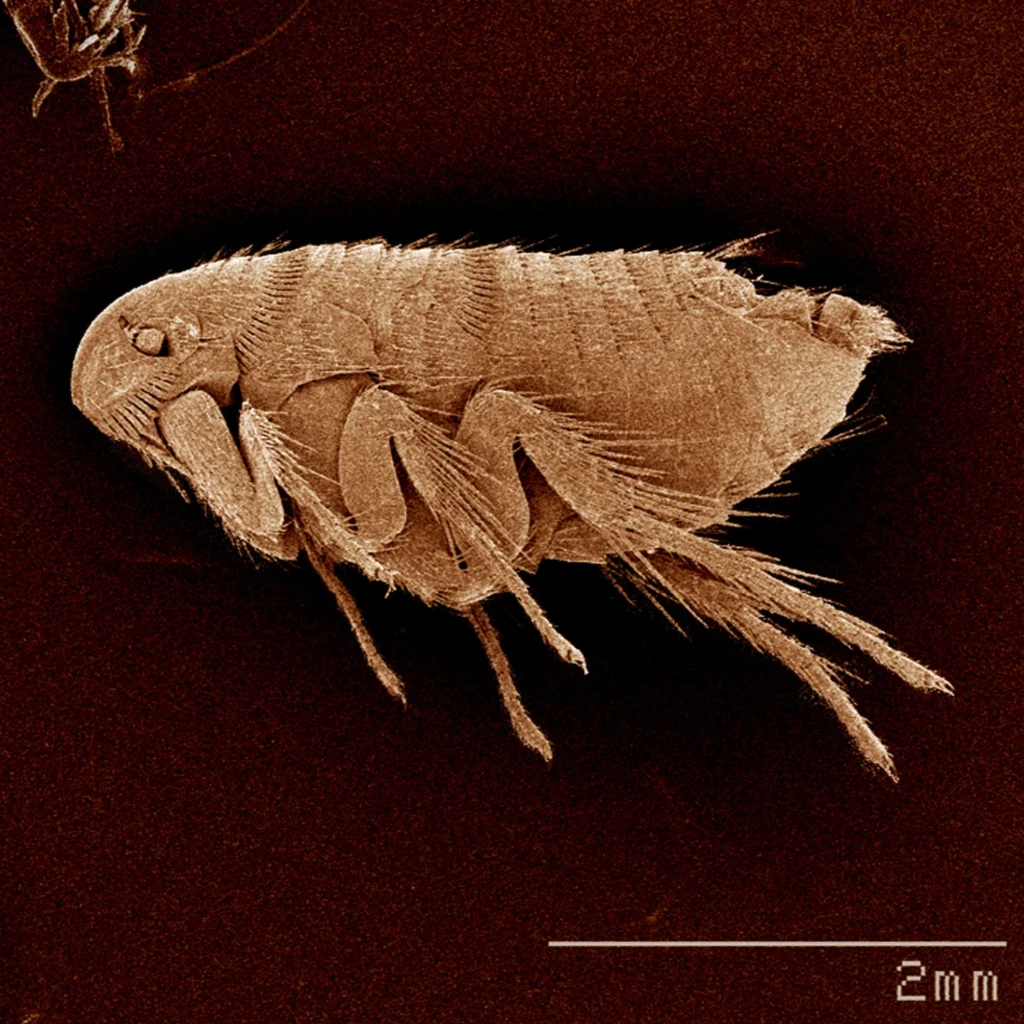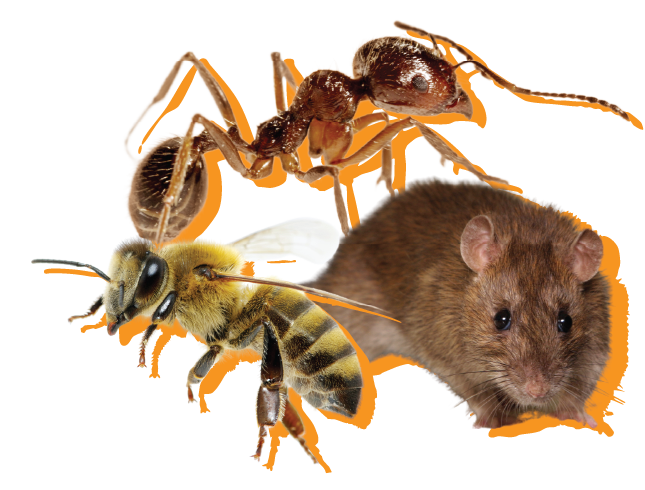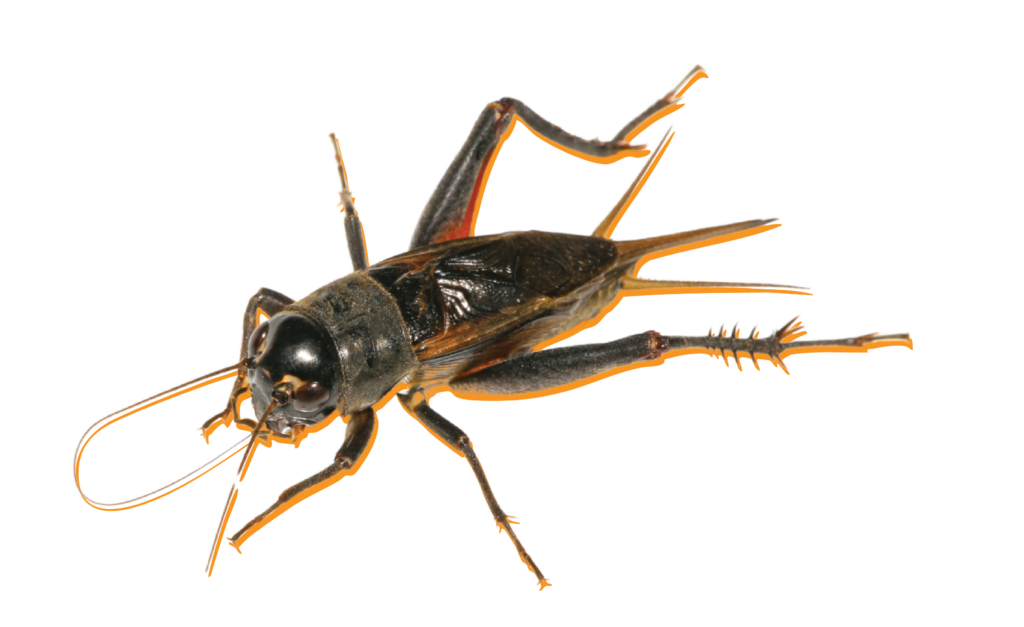Table of Contents
- Key Points
- Health Risks Associated with Common Household Pests
- Safety Concerns: Beyond Health Risks
- Vulnerable Populations: Who Is Most at Risk?
- Proactive Prevention: How to Protect Your Home and Health
- When to Call a Professional
- Do Not Underestimate the Hidden Dangers
- References
Key Points
You might think of pests as a mere annoyance—a trail of ants in the kitchen, a mouse in the attic, or a mosquito buzzing at dusk. But what if these unwelcome guests were more than just a nuisance? The reality is far more alarming: rodents alone harbor and spread more than 60 diseases that can be transmitted to humans, turning a minor infestation into a major health hazard.1
In this post, we’ll uncover the hidden dangers of pests, including threats to your health and safety. The information below also explains why ignoring that scurrying sound or tiny bite could have serious consequences for your home and your well-being. Understanding these risks is crucial for protecting yourself, your family, and your home.
Health Risks Associated with Common Household Pests
There can be many different threats associated with household pests, when it comes to health and safety. Below are the main ones to consider.
1. Disease Transmission
Many pests are notorious vectors for dangerous diseases. Rodents, mosquitoes, ticks, and cockroaches are among the most common culprits.
- Rodents (Mice and Rats): These animals are infamous for spreading diseases such as hantavirus, leptospirosis, salmonellosis, and rat-bite fever. Hantavirus, for example, is transmitted through airborne particles from rodent droppings or urine and can cause severe respiratory issues. Leptospirosis, spread through contact with water contaminated by rat urine, can lead to kidney failure and even death if untreated.2
- Mosquitoes: These tiny insects are responsible for transmitting malaria, dengue fever, Zika virus, West Nile virus, and chikungunya. Mosquito-borne diseases can cause symptoms ranging from mild fever to life-threatening complications, and their global impact is immense.3
- Ticks: Ticks are carriers of Lyme disease and Rocky Mountain spotted fever. Lyme disease, in particular, can cause long-term health issues such as joint pain, neurological problems, and fatigue if not treated promptly.4
- Cockroaches: While not always direct carriers of disease, cockroaches can spread bacteria like Salmonella and E. coli through their droppings, contaminating food and surfaces and leading to food poisoning and gastrointestinal illnesses.5
2. Allergic Reactions and Asthma Triggers
Pests are a significant source of indoor allergens, especially for children and individuals with respiratory conditions.
- Cockroaches and Dust Mites: The saliva, feces, and shed body parts of cockroaches and dust mites contain potent allergens. Exposure can trigger allergic reactions, skin rashes, sneezing, and severe asthma attacks, particularly in sensitive individuals.
- Bed Bugs and Fleas: Bites from these pests can cause itching, redness, and swelling. In some cases, individuals may develop allergic reactions or secondary skin infections from scratching the bites.
- Rodent Allergens: Similar to cockroaches, rodent droppings, urine, and saliva contain allergens that can cause respiratory problems and allergic reactions.
- Stinging Insects (Bees, Wasps, Hornets): While their stings are typically painful, they can also trigger severe allergic reactions, including anaphylaxis, a life-threatening condition.
- Bed Bugs: These pests do not transmit diseases, but their bites can cause intense itching and discomfort.

3. Food Safety Risks
Pests can easily contaminate food supplies, leading to foodborne illnesses.
- Rodents and Insects: Rats and mice gnaw through packaging, leaving behind droppings and urine that can contaminate food. Insects like cockroaches and pantry pests can lay eggs in food, introducing bacteria and pathogens that cause food poisoning and other illnesses.
- Cross-Contamination: The movement of pests between garbage, drains, and food preparation areas increases the risk of cross-contamination. This makes it essential to maintain strict hygiene and pest control measures in kitchens and pantries.
4. Mental and Emotional Well-being
The presence of pests can also take a toll on mental health. Persistent infestations can lead to anxiety, stress, and sleep disturbances, especially when dealing with pests like bed bugs or rodents that are difficult to eradicate.
Safety Concerns: Beyond Health Risks
While the health risks are alarming, pests also pose significant safety hazards that can threaten your home and family.
1. Structural Damage
- Rodents: Mice and rats have strong teeth that can chew through wood, insulation, and even electrical wiring. This not only weakens the structural integrity of your home but also increases the risk of electrical fires. They can also damage insulation and plumbing, leading to water damage.
- Termites: These wood-destroying insects can weaken the structural integrity of buildings, leading to costly repairs and even collapse.
- Carpenter Ants: Similar to termites, carpenter ants can damage wooden structures by excavating tunnels for their nests.
- Wildlife (Squirrels, Raccoons): Larger animals can damage roofs, attics, and other parts of buildings while seeking shelter or food.
2. Fire Hazards
Rodents gnawing on electrical wires can cause short circuits and fires. According to pest control experts, rodent-related electrical fires are a hidden danger in many homes, often going undetected until significant damage has occurred.
3. Risks During Pest Control
Attempting to handle pest infestations without proper knowledge or equipment can expose you to additional hazards:
- Pesticide Exposure: Improper use of pesticides can lead to respiratory issues, skin irritation, eye injuries, and even poisoning. Always follow safety guidelines and consider hiring professionals for severe infestations.
- Traps and Baits: Traps and baits can be hazardous to children and pets if not used correctly.
- Physical Hazards: Working in crawl spaces or attics to remove pests can result in falls, bites, or exposure to hazardous materials.
- DIY Pest Control: Attempting to control pests without proper knowledge and equipment can be dangerous and ineffective.
Vulnerable Populations: Who Is Most at Risk?
Certain groups are more susceptible to the health risks posed by pests:
- Children: Young children are more likely to experience severe allergic reactions and asthma attacks triggered by pest allergens.
- Elderly Individuals: Older adults may have weakened immune systems, making them more vulnerable to infections and complications from pest-borne diseases.
- People with Pre-existing Conditions: Those with respiratory issues, allergies, or compromised immune systems are at higher risk of experiencing serious health effects from pest exposure.
Proactive Prevention: How to Protect Your Home and Health
The good news is that you do not have to live in fear of pests. Proactive prevention and early intervention are key to minimizing the risks to your home or business.
1. Maintain Cleanliness
- Regularly clean kitchens, pantries, and dining areas to remove food crumbs and spills.
- Store food in airtight containers and promptly dispose of garbage.
- Reduce clutter, which provides hiding places for pests.
2. Seal Entry Points
- Inspect your home for cracks, gaps, and holes in walls, doors, and windows.
- Seal any openings to prevent pests from entering your living spaces.
3. Control Moisture
- Fix leaky pipes and faucets to eliminate water sources that attract pests.
- Use dehumidifiers in damp areas like basements and bathrooms.
4. Regular Inspections
- Schedule routine inspections by pest control professionals, especially if you live in an area prone to infestations.
- Early detection allows for prompt intervention before pests can cause significant harm.
5. Safe Pest Control Practices
- Use pesticides responsibly and always follow label instructions.
- Wear appropriate personal protective equipment (PPE) when handling chemicals.
- Consider integrated pest management (IPM) strategies that combine prevention, monitoring, and targeted treatments for safer, more effective results.
6. Educate and Involve the Whole Family
- Teach children about the importance of cleanliness and not leaving food out.
- Encourage everyone in the household to report signs of pests promptly.
When to Call a Professional
Some infestations require expert intervention. In fact, you cannot go wrong having pros assess and treat even seemingly small issues (before they turn into major ones).
Especially if you notice persistent signs of pests—such as droppings, gnaw marks, or unexplained bites—or if you experience health symptoms that may be related to pest exposure, contact a licensed pest control professional. They will have the knowledge, tools, and experience to safely and effectively eliminate pests and reduce health risks.
Do Not Underestimate the Hidden Dangers
Pests are more than just a minor inconvenience—they can be a serious threat to your health, safety, and quality of life. From spreading dangerous diseases and triggering allergies to causing structural damage and fire hazards, the hidden dangers of pests are real and far-reaching. By staying informed, maintaining a clean and secure home, and seeking professional help when needed, you can protect your family and enjoy a safer, healthier living environment.
Remember, the best defense against pests is a proactive approach. Don’t wait for an infestation to take hold—take action today to safeguard your home and loved ones from the hidden dangers lurking just out of sight.
References
- “What Is the Difference Between Salmonella and E. Coli?” U.S. Department of Health and Human Services, retrieved on April 15, 2025, from: https://www.hhs.gov/answers/public-health-and-safety/what-is-the-difference-between-salmonella-and-e-coli/index.html.
- Handi Dahmana, Laurent Granjon, Christophe Diagne, et al., “Rodents as Hosts of Pathogens and Related Zoonotic Disease Risk,” Pathogens, March 2020, https://pmc.ncbi.nlm.nih.gov/articles/PMC7157691/.
- Senaka Rajapakse, “Leptospirosis: Clinical Aspects,” Royal College of Physicians, January 2022, https://pmc.ncbi.nlm.nih.gov/articles/PMC8813018/.
- “Mosquito-borne Diseases,” World Mosquito Program, retrieved on April 15, 2025, from: https://www.worldmosquitoprogram.org/en/learn/mosquito-borne-diseases.
- “Lyme Disease Versus Rocky Mountain Spotted Fever,” Global Lyme Alliance, July 2023, https://www.globallymealliance.org/blog/lyme-disease-versus-rocky-mountain-spotted-fever.


